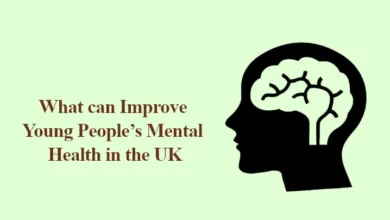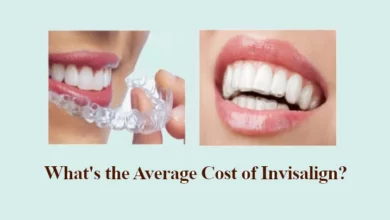How Your Body Burns Fat When You’re Not Eating

Have you ever wondered what happens inside your body when you don’t eat for a while? It might sound like everything just shuts down or slows way down, but that’s not really how it works. Your body is super smart, and when it doesn’t get food for a bit, it actually kicks into a whole different mode. This is where fat burning really starts to happen—and it’s kind of fascinating.
Let’s break it down into something super easy to understand. Think of your body as a phone that runs on battery power. When it has food, it’s charging. When it doesn’t, it’s running on its own energy. But instead of plugging into a wall, your body plugs into its fat stores.
Your Body’s Favorite Energy Source
Most of the time, your body uses sugar (called glucose) for energy. Glucose comes from the carbs in food—things like bread, pasta, rice, and even fruit. After eating, your body turns those carbs into glucose, and that gets used to power everything you do, even just sitting around.
But when you’re not eating—for example, during sleep, between meals, or during something called intermittent fasting—your body can’t use the carbs from food because there aren’t any coming in. So what does it do?
It switches gears.
After about 10 to 12 hours without food, your body runs low on glucose and starts to burn stored fat instead. This is where things get interesting.
What Fat-Burning Really Looks Like
When your body burns fat, it doesn’t just melt away like butter. It breaks it down into something called fatty acids, which then get turned into ketones. Ketones are like little energy packets your body and brain can use instead of sugar.
This is actually the whole idea behind the keto diet, where people eat a lot of fats and very few carbs to help their body get into this fat-burning state all the time.
If you want a super detailed look into how this works—or even how to get started with keto or fasting—the information on https://www.drberg.com/ is really helpful. It breaks things down in a way that’s easy to understand, with videos and tips for doing it safely.
Intermittent Fasting: Not Just Skipping Meals
One way people help their bodies burn more fat is by doing intermittent fasting. That just means going for longer stretches without eating—like 16 hours fasting and 8 hours where you eat your meals.
At first, it might sound like a weird way to eat, but there’s actually a good reason for it. During that fasting time, your body runs out of easy energy from food, so it has to use fat to keep going.
Some people say they feel clearer in the head, more focused, and even have more energy once they’re used to it. That’s because ketones (those things made from fat) are actually a really clean fuel for your brain.
But Doesn’t Your Body Go Into “Starvation Mode”?
That’s a common question—and a fair one.
The truth is, short periods without food don’t throw your body into panic mode. In fact, humans are built for it. Think about it: a long time ago, people didn’t have snacks everywhere or drive-throughs on every corner. Sometimes, they didn’t eat for a whole day or more, and their bodies adapted.
So unless someone is fasting for several days in a row without any food at all (which isn’t something to try without a doctor), short fasts don’t slow your metabolism. They actually help it work better by letting insulin levels drop.
When insulin (a hormone that stores fat) goes down, your body finally gets the chance to use the fat it’s been holding onto.
What If You’re Not Even Trying to Lose Weight?
Even if fat loss isn’t the goal, giving your body some breaks from food can help in other ways. It can support better blood sugar control, help with focus, and give your digestive system time to rest. That’s why some people feel less bloated and more energized when they eat in shorter windows of time.
Some athletes even use short fasting periods to help their bodies burn fat more efficiently, especially before workouts.
So it’s not just about looking a certain way—it’s about helping your body do what it’s naturally designed to do.
What Happens to the Fat?
Let’s get back to the science for a second, but don’t worry—it’s not too complicated.
When fat gets used for energy, your body breaks it down into carbon dioxide and water. The carbon dioxide leaves when you breathe out, and the water leaves through sweat or urine. So yes—fat literally leaves your body through your breath and bathroom trips. Wild, right?
Should Everyone Try This?
Not necessarily.
Even though fasting and keto can be helpful, they’re not for everyone. People who are still growing, have certain health issues, or have a history of eating disorders should always check with a doctor or a nutrition expert first.
Also, the type of food you eat when you’re not fasting really matters. If someone is fasting all day and then eating junk food when the fast ends, that’s not helping the body at all. The idea is to eat whole, healthy foods that give your body the stuff it actually needs—like protein, healthy fats, and veggies.
So, What’s the Big Takeaway?
The big idea here is that your body is way better at taking care of itself than most people realize. When you give it a break from constant eating, it doesn’t freak out—it just flips a switch and starts using stored energy, especially fat.
Whether it’s during sleep, a skipped breakfast, or a longer break like intermittent fasting, your body knows how to handle it. It burns fat, powers your brain with ketones, and may even help you feel more focused and energized.
But it’s not magic. It still takes time, balance, and eating good food when you do eat.
Want to Try It? Start Small
If the idea of burning fat while not eating sounds interesting, it’s okay to start simple. Maybe just wait a little longer before breakfast, or stop eating a couple hours before bed. Let your body get used to it. No need to jump into a 16-hour fast on day one.
Listen to how your body feels. Pay attention to energy, sleep, and focus—not just weight.
And if you ever want real tips or deeper info, checking trusted resources with actual science is always a smart move. It makes all the difference between guessing and doing it right.





